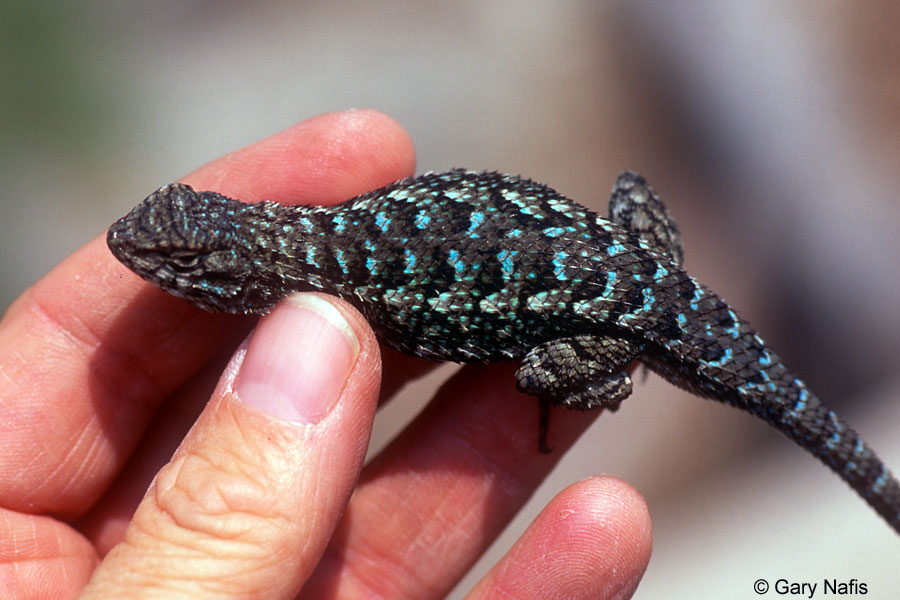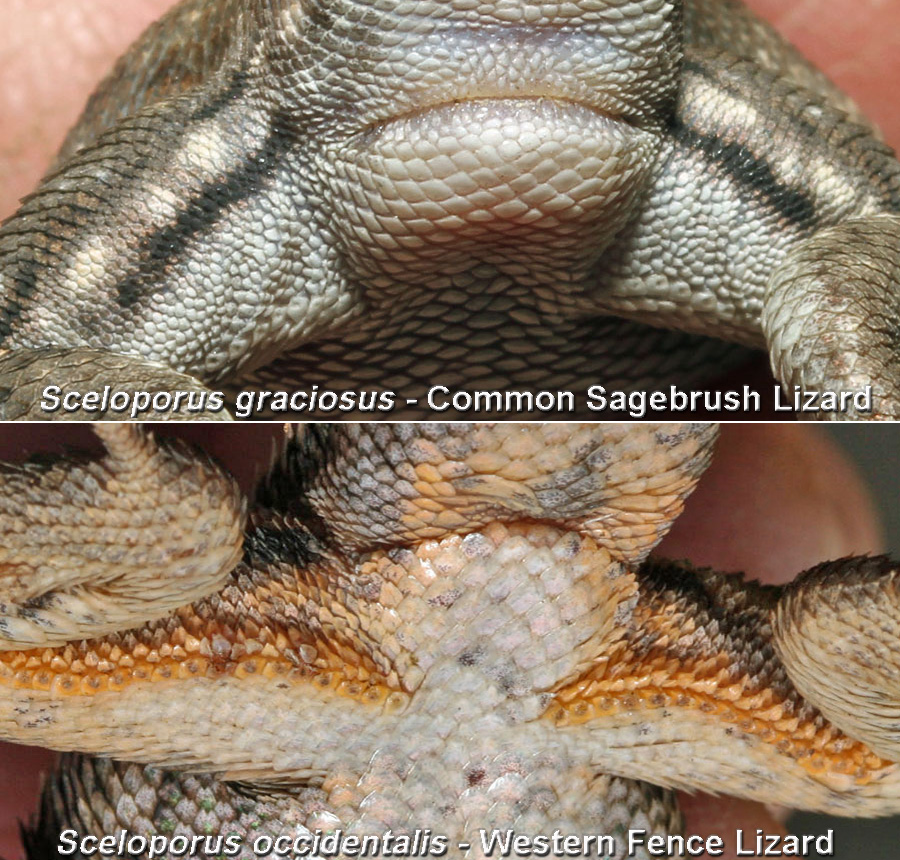Form & Function
The Western Fence Lizard is a medium sized lizard that
measures from 3.9 inches to 8.4 inches in total length, from
snout to tail end (Cossel, 1997). These measurements can vary
drastically because these lizards have the ability to lose their
tails if they need to distract and escape a predator.
Sceloporus occidentalis, like other lizards have quick
reactions and fast reflexes. Using all four limbs is their main
form of movement and they use it to their advantage whenever
possible. These lizards will sprint for several reasons, but
mainly to escape their predators and to capture their
prey. Their sprint speeds can vary
drastically depending on the
temperature, which impacts multiple things in the lizard’s life.
Like most reptiles,
Western Fence Lizards
are dependent on the temperature of its surroundings; warm is
the most suitable temperature for these lizards, making them
diurnal organisms (Nafis, 2013). When the temperatures start to
get too cold, the lizards become inactive and go into
hibernation in crevices,
burrows, or under rocks (Nafis, 2013). When the weather is warm
enough, these lizards will be
found in several sunny and exposed habitats, but will not be
found in dense, moist forest or low, flat desserts (Cossel,
1997). This requires them to have camouflage to hide from their
predators in the wide open. Cossel describes the coloration of
Sceloporus occidentalis as having dorsal ground
colorations on their pointed scales that include some shade of
gray, brown, and tan that are broken by a series of wavy dark
lines or blotches. Cossel also observed that the lizards have
the ability to lighten or darken the color to some extent
depending on the darkness or lightness of the background. So the
lizard has some control of its camouflage and is aware of when
it needs to be darker or lighter. This really helps them to
blend in when they are basking in the sun on a rock or fence
post! These aren’t the only colorations on the lizard; there are
more detailed markings on both the male and female lizards, with
the males being more enhancing.
suitable temperature for these lizards, making them
diurnal organisms (Nafis, 2013). When the temperatures start to
get too cold, the lizards become inactive and go into
hibernation in crevices,
burrows, or under rocks (Nafis, 2013). When the weather is warm
enough, these lizards will be
found in several sunny and exposed habitats, but will not be
found in dense, moist forest or low, flat desserts (Cossel,
1997). This requires them to have camouflage to hide from their
predators in the wide open. Cossel describes the coloration of
Sceloporus occidentalis as having dorsal ground
colorations on their pointed scales that include some shade of
gray, brown, and tan that are broken by a series of wavy dark
lines or blotches. Cossel also observed that the lizards have
the ability to lighten or darken the color to some extent
depending on the darkness or lightness of the background. So the
lizard has some control of its camouflage and is aware of when
it needs to be darker or lighter. This really helps them to
blend in when they are basking in the sun on a rock or fence
post! These aren’t the only colorations on the lizard; there are
more detailed markings on both the male and female lizards, with
the males being more enhancing.
 According to Cossel, the male S. occidentalis have
distinct belly and throat patches that are vividly blue,
bordered by black marking. These blue patches are mainly on the
males for reproductive purposes, and is one method the males use
to show off to the females and get a mate. Along with that they
have scattered blue and green scales on their backs, making them
“flashy” and attractive to the females. The female and juvenile
Western Fence Lizards patches are either absent or less
prominent. However, on the posterior limbs of the Western Fence
Lizard there is yellowish
orange coloration with black lines, these colors help
distinguish them from Sagebrush Lizards. This allows for
adult females and males to be distinctly different from one
another and other species, and makes them easily recognizable.
According to Cossel, the male S. occidentalis have
distinct belly and throat patches that are vividly blue,
bordered by black marking. These blue patches are mainly on the
males for reproductive purposes, and is one method the males use
to show off to the females and get a mate. Along with that they
have scattered blue and green scales on their backs, making them
“flashy” and attractive to the females. The female and juvenile
Western Fence Lizards patches are either absent or less
prominent. However, on the posterior limbs of the Western Fence
Lizard there is yellowish
orange coloration with black lines, these colors help
distinguish them from Sagebrush Lizards. This allows for
adult females and males to be distinctly different from one
another and other species, and makes them easily recognizable.
The Western Fence Lizard is quite tolerant and adaptable to
several habitats. Salice and
colleagues did an experiment to test just how tolerant these
lizards are to inorganic lead, which represents the pollution
from the nearby cities by or within their habitat. Salice et al.
(2009) dosed the lizards with several levels of lead over a
course of two different time periods of fourteen days and sixty
days. The results showed that the lizards were tolerant of up to
500 mg/kg/d of lead for fourteen days or 20 mg/kg/d of lead for
sixty days. Nonetheless, pollution is the number one cause of
declining numbers in their populations, but the population of
the Western Fence Lizards is quite stable. As of now their
species is classified as not rare and apparently secure, making
them a low priority group for worries extinction (Cossel, 1997).
Sceloporus occidentalis is an abundant reptile in several
areas and easily encountered in the western United States.